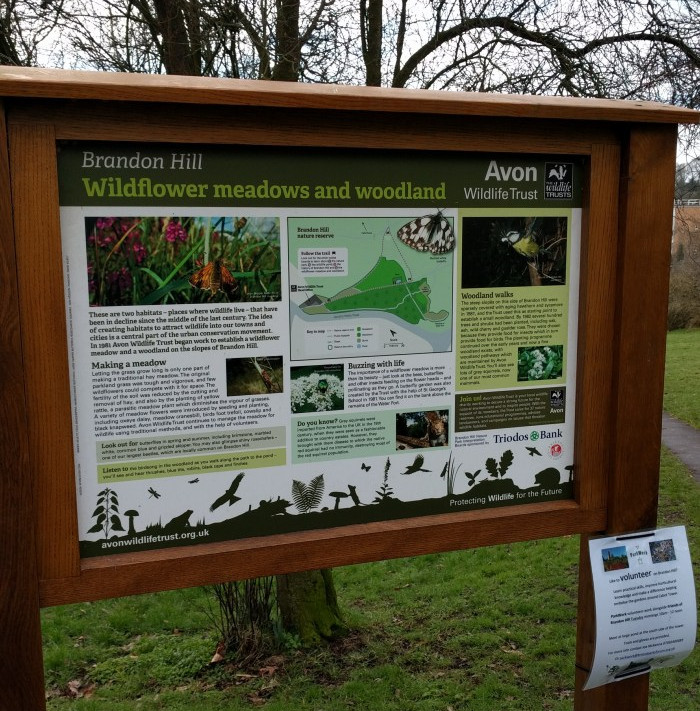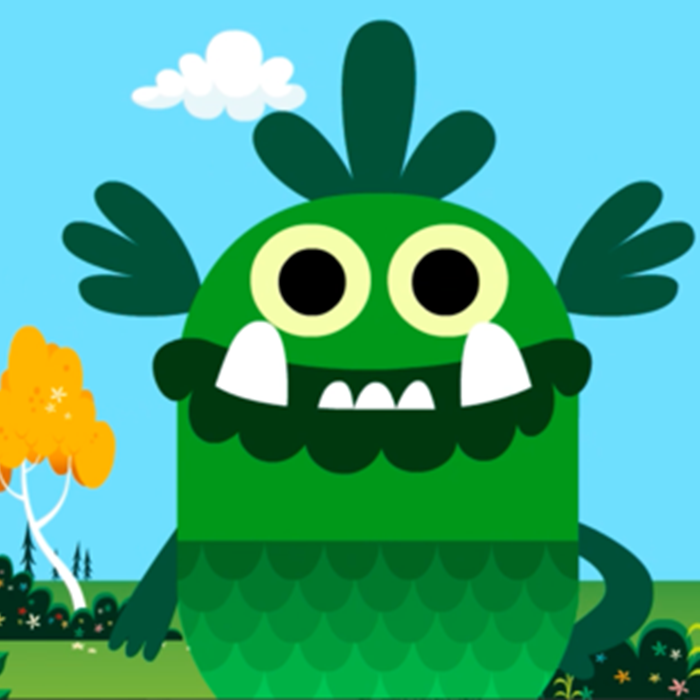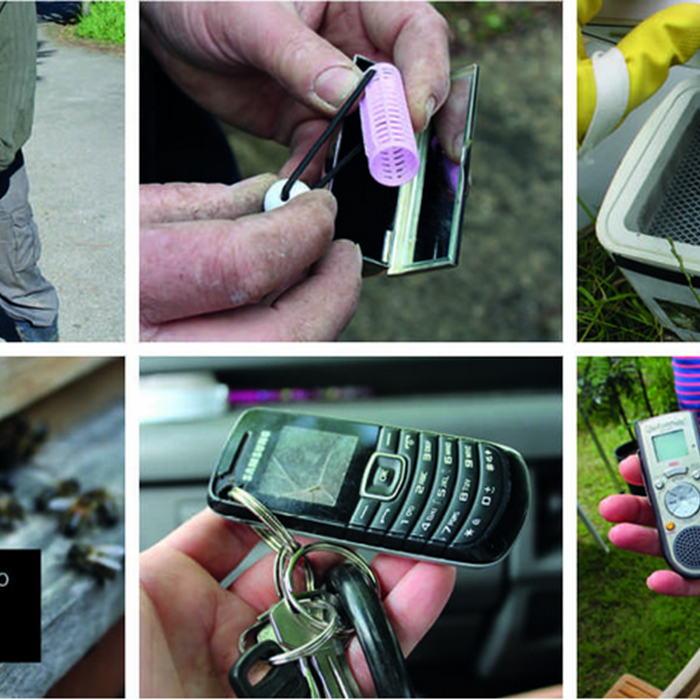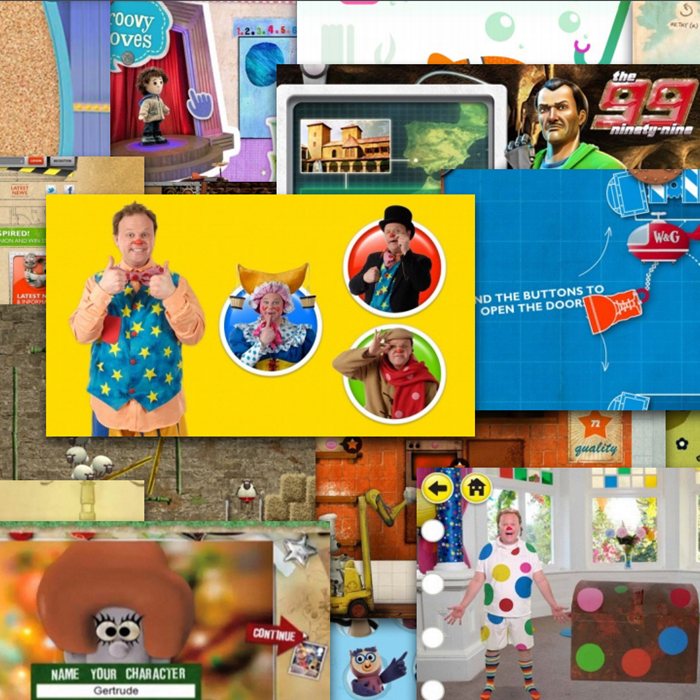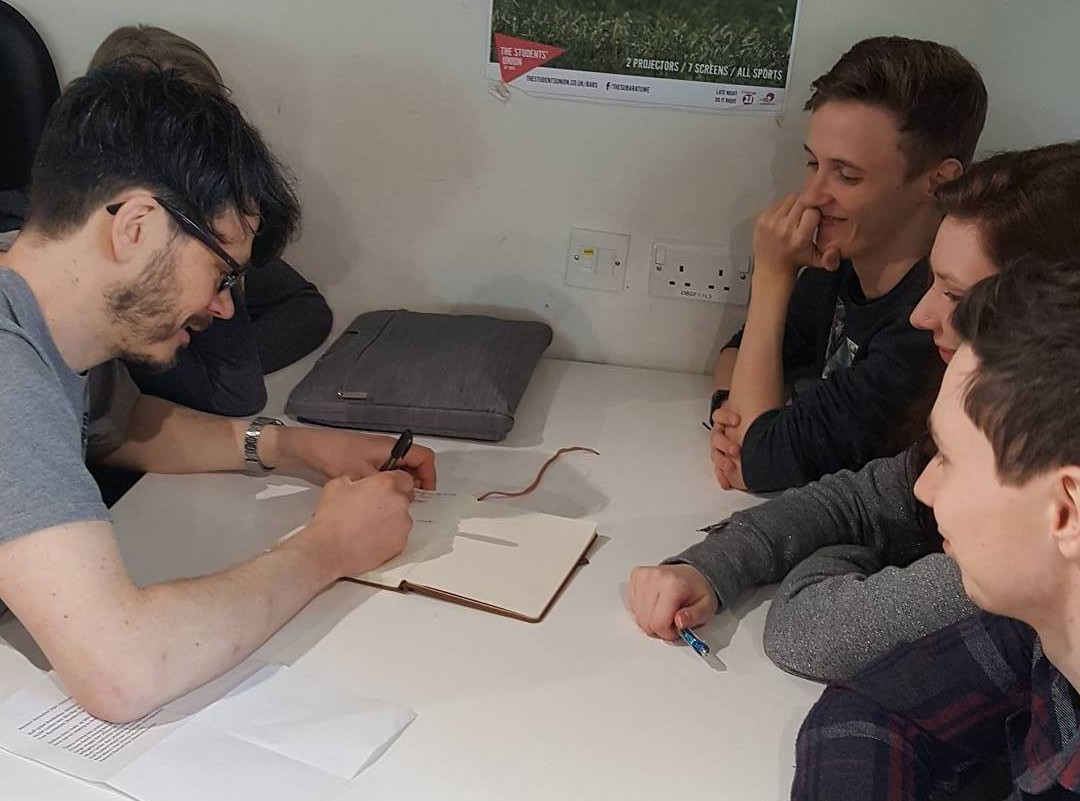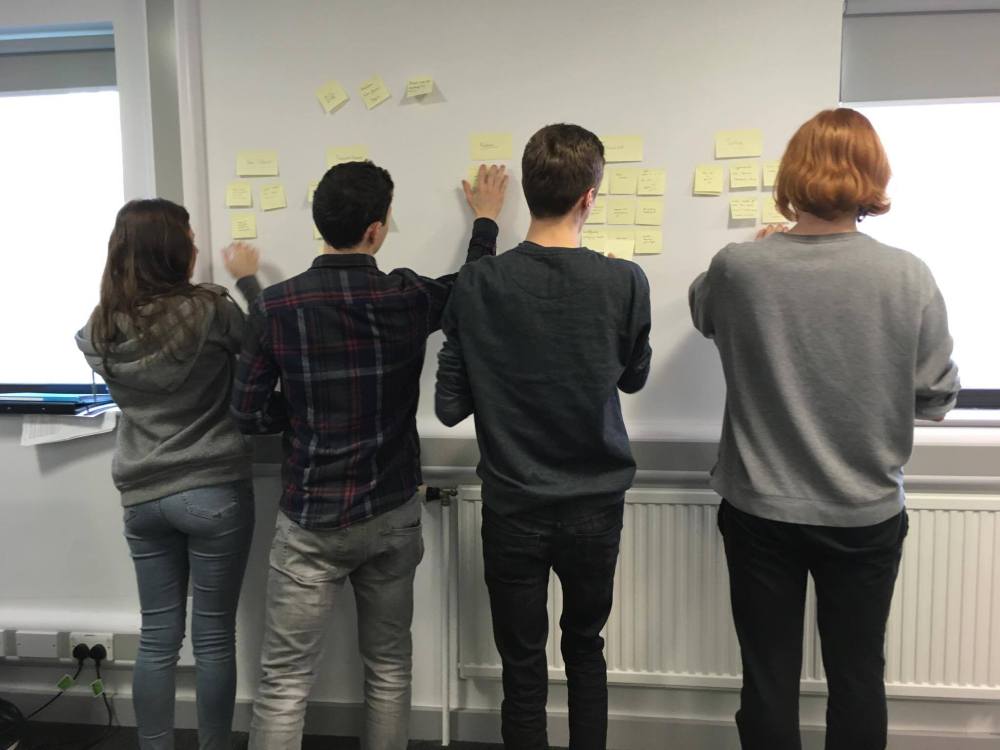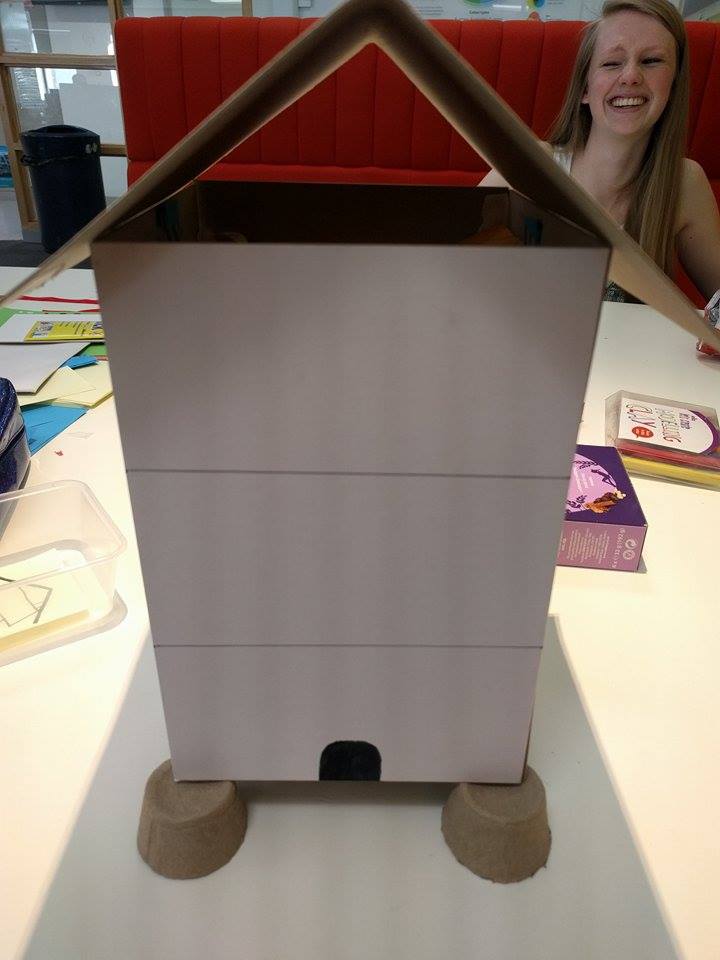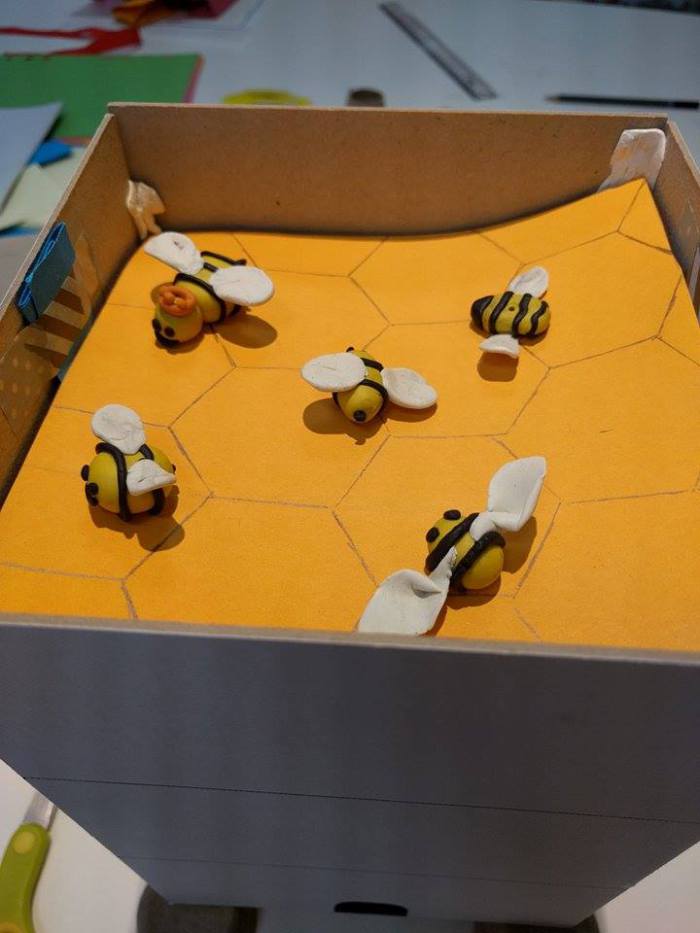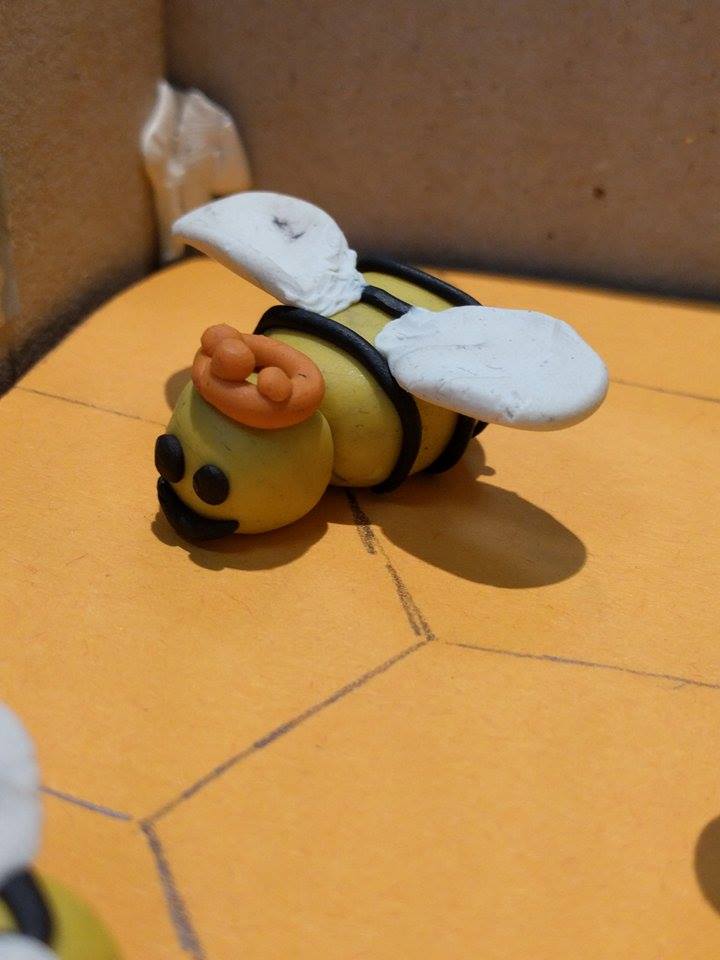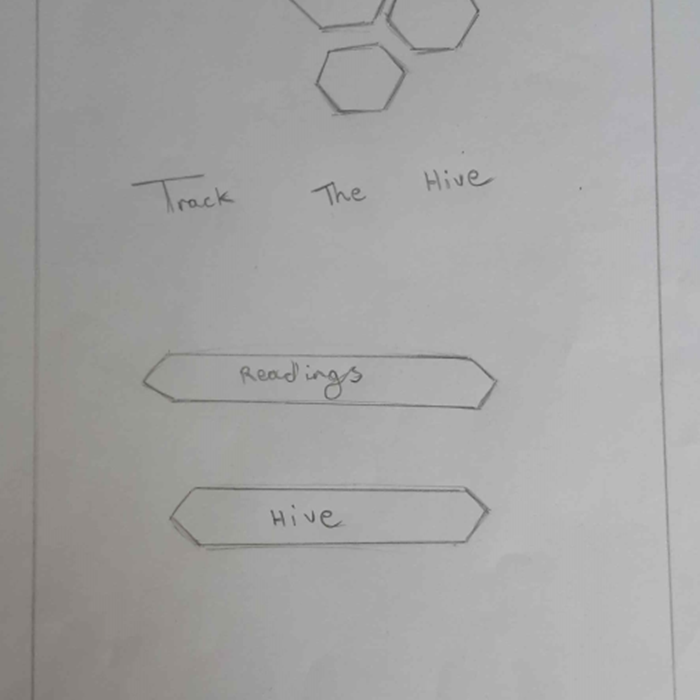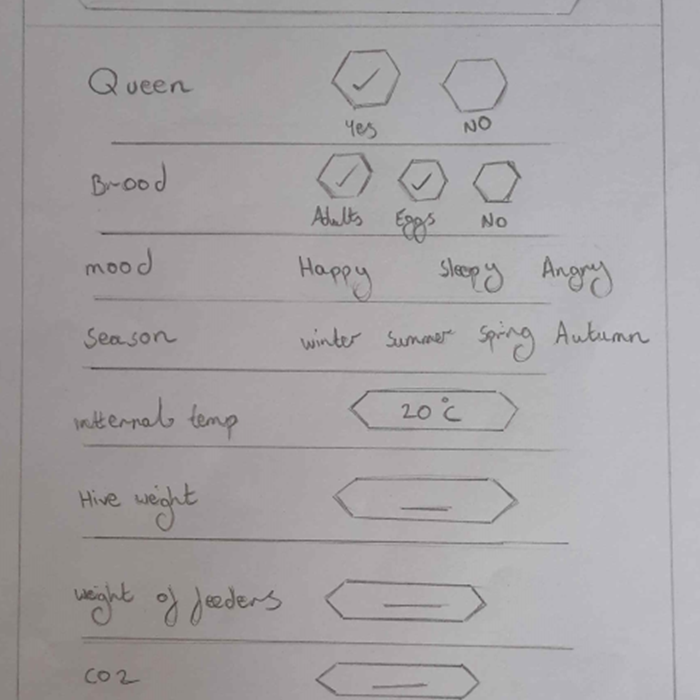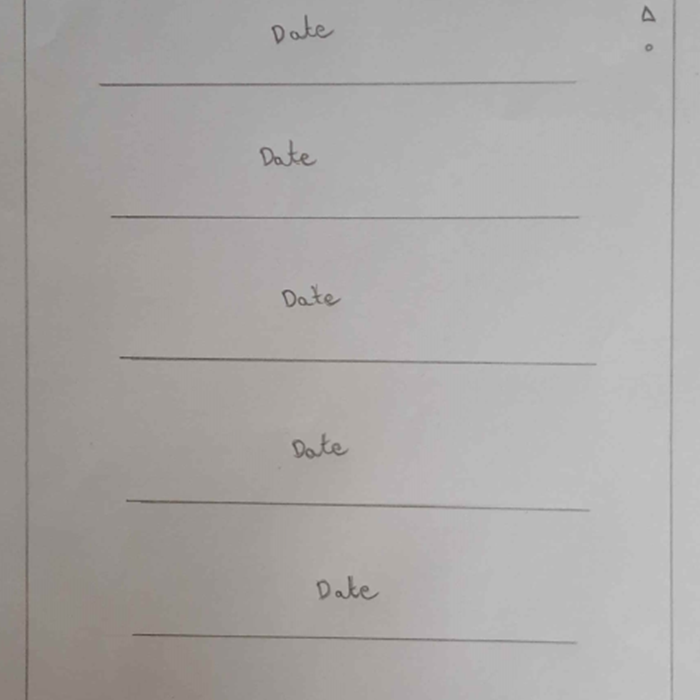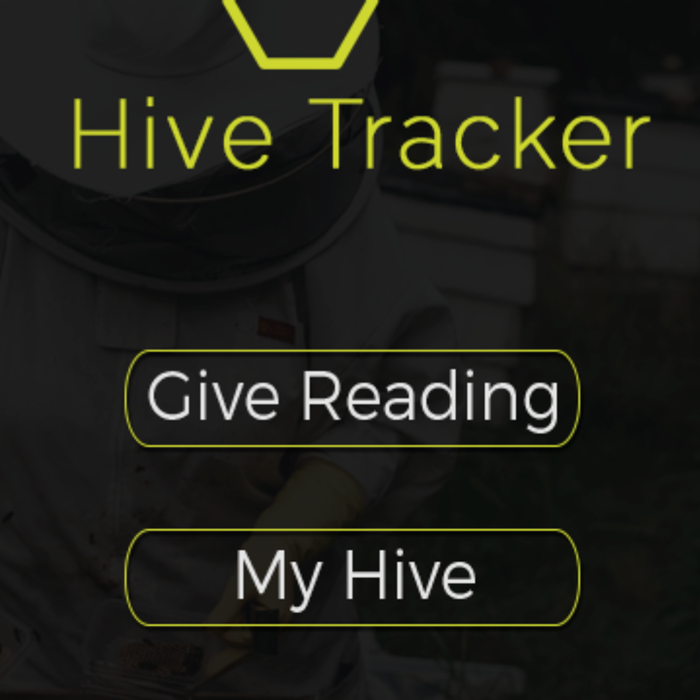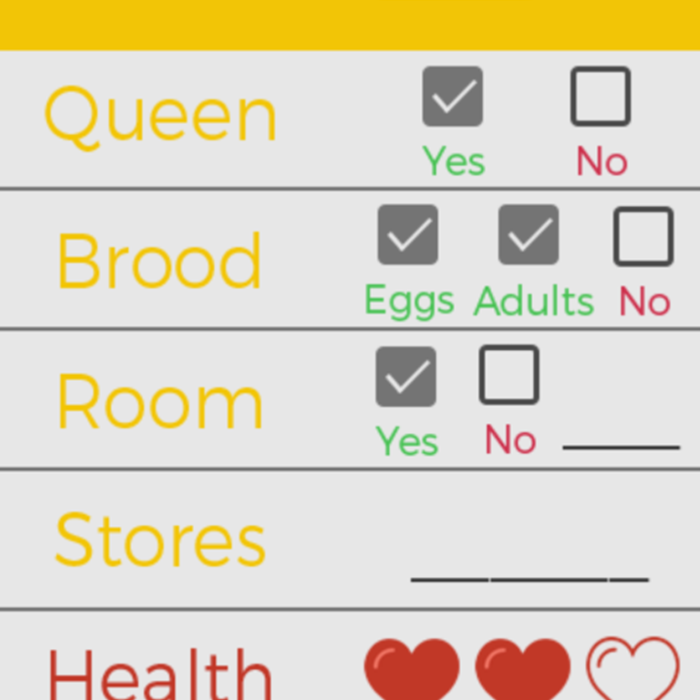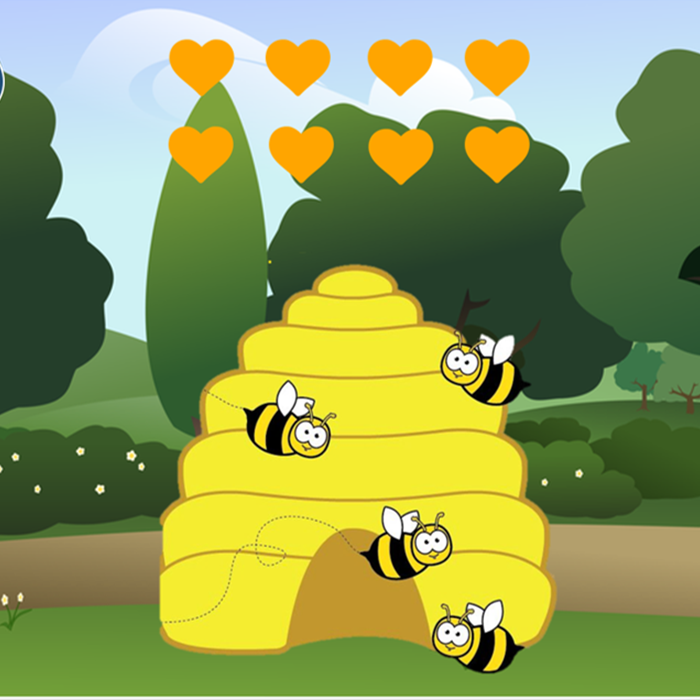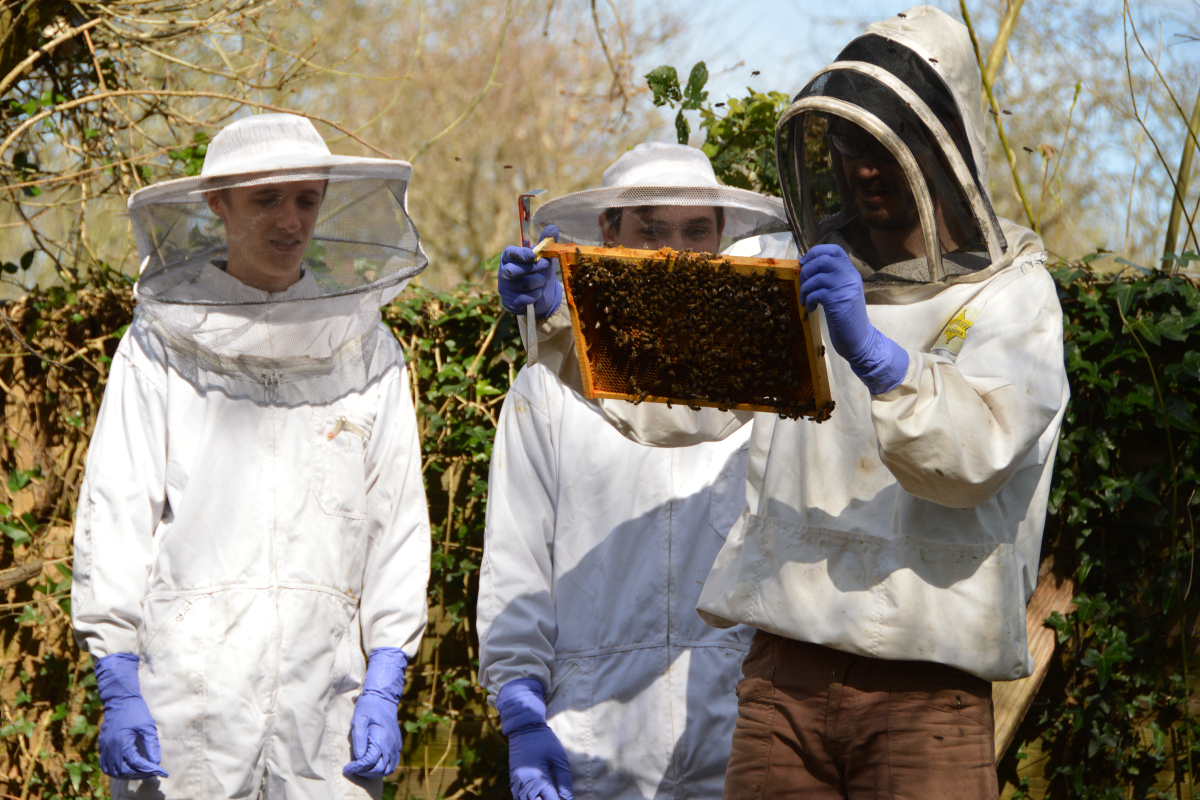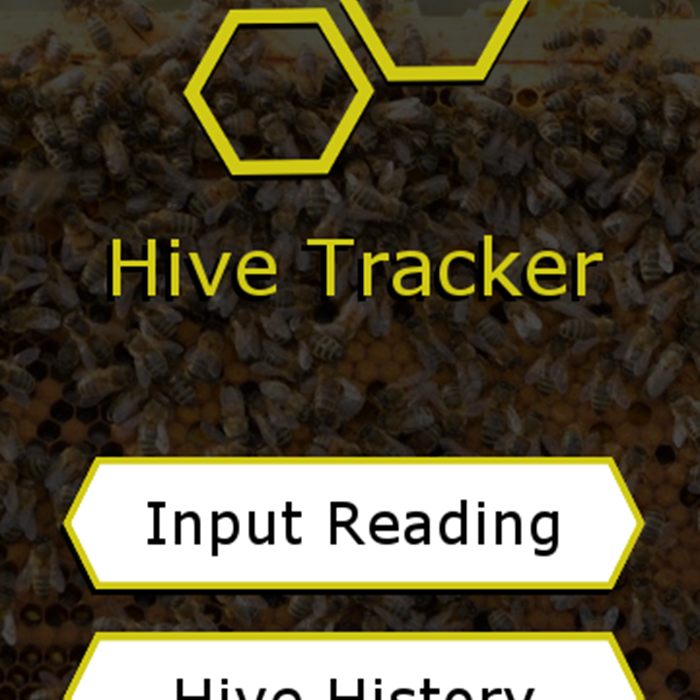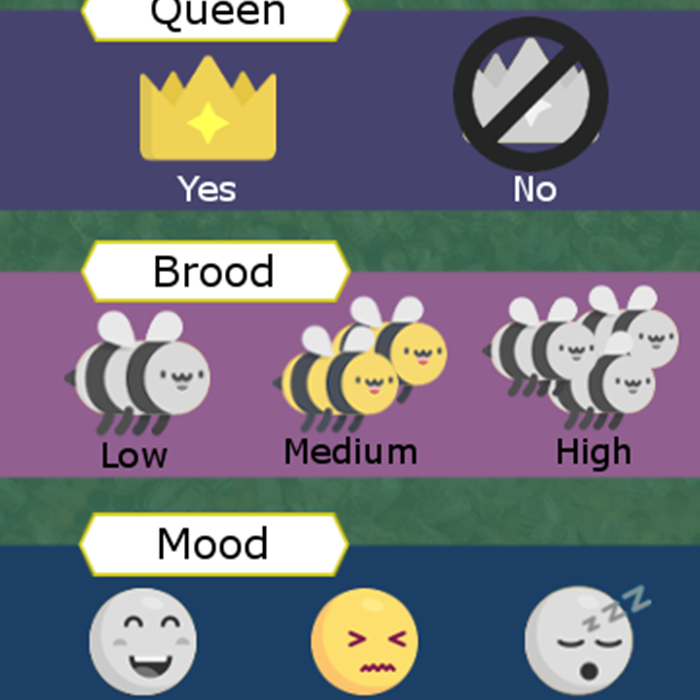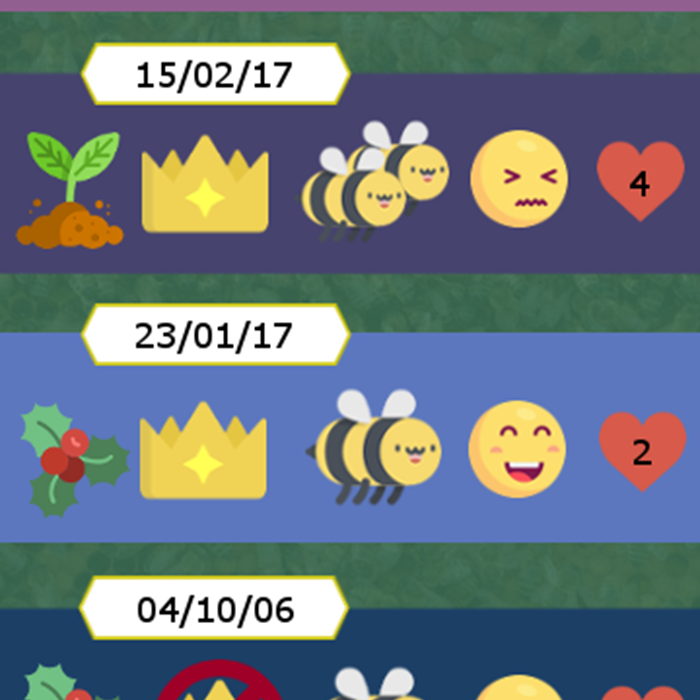To gather first hand information on bee conservation we met with Dr Jeff Davey who is a research technician from UWE. He takes care of honey bee hives that are located on campus grounds as well as hives on his allotment.
Jeff also works with school children to teach them about bees using various methods that range from live demos to having children play act being bees. He creates videos for them and told us that he usually keeps them short as children sometimes have a shorter attention span.
Another method he uses is having the children make models of a hives contents to get hands on experience with the hive, which is usually an intangible experience for them. The information that he gave us was helpful in understanding not only bee conservation but how to make learning fun for children in primary schools.
Virtual hive
One of the great ideas Jeff had was to regularly take photos of the hive and have them turned into a ‘virtual hive’. Children could then explore the inside of the hive using a tablet or smartphone. He said that this would be a great way of educating children as well as being useful for tracking how many bees are in the hive, or if there have been any changes between visits.
We discussed creating a virtual hive and what that would look like and Jeff drew a rough design for us.
Putting a camera or sensor inside of the hive would not be a possibility as bees cover anything inside the hive (from dead rodents to computer gear) with tree sap. This was vital information on how bees deal with foreign objects placed inside the hive, and something that we would have otherwise missed.
City hive
Following on from the virtual hive we came up with the idea of creating a City Hive that collates data from various bee hives in Bristol and creates a virtual ‘city hive’. This would be a way of representing bee populations and health as well as teaching children how they can help. We thought that if children could readily see the impact of their actions to the bee population as a whole they would be more excited about the positive changes they can make.
Our target age
Jeff suggested that children of around 10 are a great audience as they are old enough to understand more complex information and young enough to still be engaged with the subject matter. He also said that if children of that age (or younger) do not connect with nature then they are less likely to care about envionmental issues as adults.
They are also a great age group to use technology to engage, as although they have short attention spans, they love using technology.
